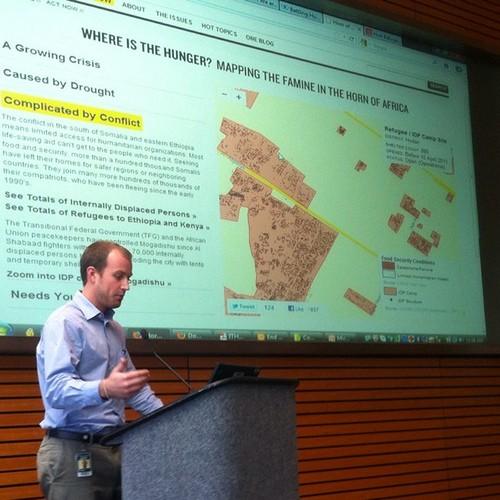On Wednesday the Global Facility for Disaster Risk Reduction (GFDRR) team at the World Bank ran a full day deep dive meeting to discuss data and maps in the Horn of Africa. The meeting focused on creating better data collaborations for the regional response to the ongoing famine and continued development with a purpose of bringing together parties invested in a making data more accessible to all humanitarian actors and governments working in the region.
The larger goal of the meeting was to create longterm momentum in the open data space in the Horn of Africa. Robert Soden of the Open Disaster Resilience Initiative (OpenDRI) and Stuart Gill of GFDRR Labs led the meeting, which brought together the World Bank Disaster Risk Management Team, the Regional Center for Mapping of Resources for Development (RCMRD), World Food Programme, Humanitarian Open Street Map Team, Google, NASA SERVIR, USAID Office of Foreign Disaster Assistance (OFDA), and the Department of State Humanitarian Information Unit. Much of the discussion revolved around tools, data types and format, existing partnerships, and how all can be embedded into the region. A common theme highlighted throughout the day was the lack of data and information sharing that is happening now, and how this is a key barrier to a more effective response to the famine. Incredible results can happen when data is shared, and we want to continue to support efforts like these.

Robert Soden speaks on data collaboration in the Horn
Eric and I attended the meeting to share details about our mapping work with USAID and how we are using these publicly available maps to tell complex stories around the famine with ONE.org. We also talked about how speed matters, particularly for on the ground responders, and how open formats are required for sustainability and collaboration. Others also shared about their data work in the Horn, kicking off some initial sharing and focusing on how to better collaborate in the future.

I had the chance to share our experience of working with data in the Horn and the need for open formats
What we're doing.
Latest
